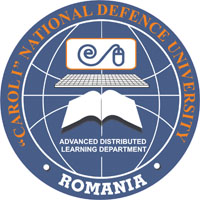A LITERATURE REVIEW ON IMMERSIVE VIRTUAL REALITY IN EDUCATION: STATE OF THE ART AND PERSPECTIVES
A LITERATURE REVIEW ON IMMERSIVE VIRTUAL REALITY IN EDUCATION: STATE OF THE ART AND PERSPECTIVES
Author(s): Michela Ott, Laura FREINASubject(s): Education
Published by: Carol I National Defence University Publishing House
Keywords: "Virtual Reality"; education; immersion; educational technology
Summary/Abstract: Since the first time the term "Virtual Reality" (VR) has been used back in the 60s, VR has evolved in different manners becoming more and more similar to the real world. Two different kinds of VR can be identified: non-immersive and immersive. The former is a computer-based environment that can simulate places in the real or imagined worlds; the latter takes the idea even further by giving the perception of being physically present in the non-physical world. While non-immersive VR can be based on a standard computer, immersive VR is still evolving as the needed devices are becoming more user friendly and economically accessible. In the past, there was a major difficulty about using equipment such as a helmet with goggles, while now new devices are being developed to make usability better for the user. VR, which is based on three basic principles: Immersion, Interaction, and User involvement with the environment and narrative, offers a very high potential in education by making learning more motivating and engaging. Up to now, the use of immersive-VR in educational games has been limited due to high prices of the devices and their limited usability. Now new tools like the commercial "Oculus Rift", make it possible to access immersive-VR in lots of educational situations. This paper reports a survey on the scientific literature on the advantages and potentials in the use of Immersive Virtual Reality in Education in the last two years (2013-2014). It shows how VR in general, and immersive VR in particular, has been used mostly for adult training in special situations or for university students. It then focuses on the possible advantages and drawbacks of its use in education with reference to different classes of users like children and some kinds of cognitive disabilities (with particular reference to the Down syndrome). It concludes outlining strategies that could be carried out to verify these ideas.
Journal: Conference proceedings of »eLearning and Software for Education« (eLSE)
- Issue Year: 11/2015
- Issue No: 01
- Page Range: 133-141
- Page Count: 9

